Attachments: More options than ever
06 January 2020
There are numerous attachments available for different types of construction machinery – indeed, the range of attachments available seems to be ever-increasing. As is the case with all aspects of the construction industry, new technology is influencing the development of attachments.
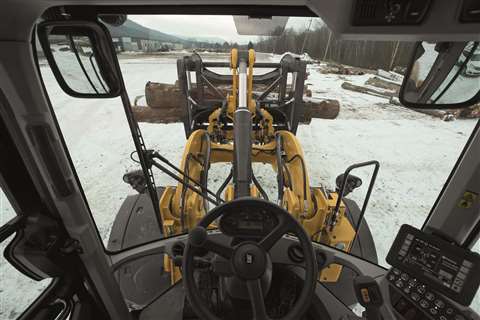
It can be argued that one of the biggest changes in the attachments sector has been the adoption and acceptance of tiltrotators. These types of attachments were introduced to the ‘Nordic’ market (Denmark, Norway, Sweden, Finland and Iceland) in the 1980s, so they are certainly nothing new – what is new is their rate of adoption.
Tiltrotators
“The Nordic countries are still the main market for tiltrotators, by far. But we see a very interesting development in Central Europe and North America. Outside the Nordics the Benelux countries are actually the strongest when it comes to tiltrotators,” comments Sven-Roger Ekström, Rototilt product manager.
The Benelux countries (Belgium, the Netherlands and Luxemourg) adoption of tiltrotators is interesting. However, as they are not too far away from the Nordics in terms of geography, or as markets in general, what is arguably more noteworthy is the take up from North America.
Ekström comments that this year’s Bauma show in Munich, Germany, provided the confirmation that the industry now understands tiltrotators. “A lot has happened the last couple of years when it comes to the questions around tiltrotators.
“It has changed from curiosity to a growing demand. We were impressed at Bauma and got the feeling that the tiltrotator-concept really is establishing. Not only has the awareness increased, so has the competence about installing and the use of tiltrotators.”

Caterpillar make a range of different attachments, including tiltrotators. Rick Verstegen, work tools product application specialist, Caterpillar, comments that in Norway, Sweden, Denmark and Finland almost 100% of the excavators up to 30 tons (27 tonnes) are equipped with a tiltrotator and agrees that, worldwide, adoption is increasing.
“Awareness is growing rapidly. In central and southern European countries, as well as in the US, customers are starting to appreciate the benefits of using tiltrotators. Contractors and operators working in road construction, landscaping, as well as in sewer, water and utility applications, value the benefits the tiltrotator brings to the functionality of their excavators,” he comments.
Verstegen puts this increasing adoption down to three things: efficiency, versatility and safety. “An excavator with standard coupler or a pin-on bucket is only able to work parallel to the direction of the boom and stick. Adding tilting and 360-degree rotating functions to the end of the stick upgrades the functionality of the excavator front structure, enabling work in all directions at different angles. It not only increases the efficiency and versatility of the excavator, but also the overall safety on the jobsite.”
Although estimates vary, using a tilltrotator has been said by some companies to improve efficiency by at least 30%.
Construction safety
Accidents caused by buckets dropping from excavators is said to be a major problem worldwide. Norwegian construction consortium Veidekke is one of the companies that is trying to address this problem, and has issued a statement that they will require secure attachment brackets on all excavators over five tonnes that they hire from 1 January 2020.
Attachments manufacturer Engcon says that the new Q Safe range of quick couplers for excavators can address this issue. Q-Safe takes over part of the driver’s responsibility for safety and makes it impossible to link the bucket incorrectly. The bucket or tool must have ground contact that exerts a certain pressure. In other words, buckets, tools and attachments cannot be removed whilst in the air.
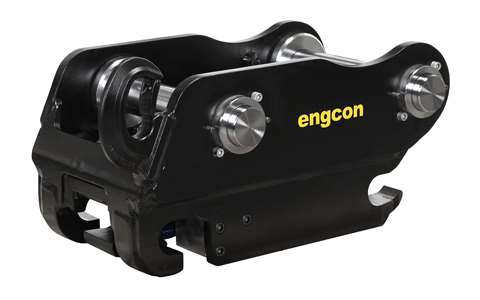
“Unfortunately, there has been some inertia in the industry and the interest in secure attachment brackets has been relatively small. I myself have never doubted the need for a secure attachment and now I finally see evidence that the bigger players are also addressing the problem,” said Stig Engström, Engcon founder.
Elsewhere, in November this year John Deere announced three new grading attachment models – the PD-72 inch (1,829 mm), PD-84 inch (2,134 mm) and PD-96 inch (2,438 mm) – for skid-steer loaders and compact tracked loaders.
The Level Best box blades are available in Topcon ready 2D precision grading and 3D precision grading options. The 2D Level Best PD Series comes ready to produce precise 2D grading by working with laser transmitters. It automatically adjusts the elevation by controlling the lift and tilt of the attachment to maintain vertical accuracy and smooth grading performance.
The Level Best PD (Precision Grading) Series Grading Box System adjusts dozens of times per second to ensure a smooth grade with tight tolerances, and so is said to be ideal for precision grading.
The PD Series is made specifically for skid-steer loaders and compact track loaders. The frame design is said to minimise the potential ‘bounce’ effect that can occur in skid-steer loaders due to the short wheelbase.
New attachments

Earlier this year Italian-based company Indeco released a number of new attachments to coincide with Bauma Munich. One of these was the HP 100, the smallest in the company’s range which was designed for the increasingly popular segment of mini excavators.
According to the company, the challenge lay in trying to make a hammer that could work with a reduced oil flow rate – from 15 litres upwards – that would maintain maximum hydraulic efficiency despite weighing under 60kg. The HP 100 has a larger steel diameter than hammers in the same class and so is said to ensure high productivity levels.
Staying with new launches, and in October 2019 German-based Kinshofer added the KFX-Series hydraulic breaker excavator attachments to its product line. The 14 models in the range offer operators a wide range of weight and power options. This is said to make it easier to find a breaker that fits individual needs.
The smallest model in the series, the KFX 14, designed for excavators weighing 8-15 tons (7.2-13.6 tonnes), produces 1,475 foot-pounds (2,000 joules) and 600-900 blows per minute. At the upper end of the series, the KFX 200 – for 100-200 ton (90.7-181.4 tonne) machines – produces 25,815 foot-pounds (35,000 joules) and 150-250 blows per minute.
When asked about how new technology is influencing their products a spokesperson for the company said, “Safety and productivity are driving the advancements in all aspects of construction, including modern business and social digital landscapes. Connectivity is crucial, along with the ability to interface with the carrier through sophisticated hydraulics and electronics.”
The spokesperson then listed a number of ways in which this connectivity is occurring, including: touch screen, Bluetooth, GPS, Wi-Fi, remote maintenance, tool tracking, rotation sensor, auto-calibration, geometry data tool, safety sensor quick coupler, machine coupler control and dozer blade control.
Elsewhere, a US mineral company has been using an Allu Transformer M 3-20 material processing attachment at its Middleton, Tennessee, US, montmorillonite clay mine. The company purchased the surface mining M-Series screener/crusher attachment from Allu to use fitted to its Hitachi 650 excavator. The attachment has been successfully used for over a year crushing mined clay down to minus 100mm whilst simultaneously loading haul trucks.
Processing clay at a surface mine can be a problematic task, leading to the company purchasing the attachment to get the clay off the boulders as efficiently as possible.
The Allu Transformer M 3-20 has helped enable the company to be able to access clay that it could not previously mine, as well as process clay from boulders. It has also enabled the company to process the waste material that was being stockpiled.
The company is now using the Allu M-3-20-100mm as part of its whole plant operation. According to Allu territory manager Steve Fowler, “The customer is enjoying the advantages of reduced downtime with its crusher at the plant and lower overall operating costs.
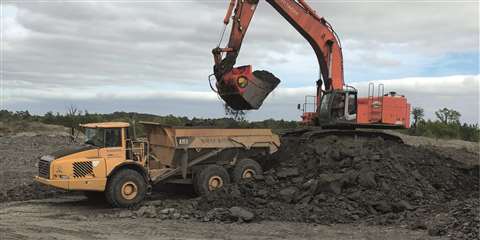
“They’re able to go back and process material that previously was considered unusable, and also mine areas they had passed over, saving them from having to buy and strip additional land. The Allu Transformer allows them to crush, screen and load as a one-person operation.”
Attachment product development
The relationship between the development of attachments and that of construction equipment is interlinked – one does not simply follow the other. This is a point that Torsten Ahr, vice president, marketing, Hydraulic Attachment Tools Division, Epiroc, makes.
“New technology in the field of hydraulic attachment tools is to a large extent related to developments on carrier side. So on one side we need to follow excavator developments but, on the other side, we are driving forward some new products that are in the pipeline on our side as well,” comments Ahr.
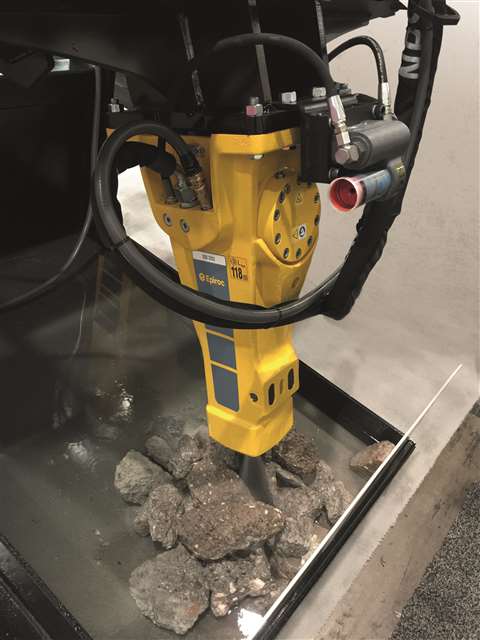
When it comes to how new technology is influencing the development of their attachments Ahr highlights the Drum Cutter range. He comments that they can be used in a wide variety of applications from demolition to rock excavation, trenching, profiling and tunnelling.
He also mentions the company’s range of silent demolition tools, saying, “They are developed to meet the exceeding regulations in Tier 1 markets in terms of noise, dust and vibrations. They are made to handle all sorts of material such as concrete, rebar, masonry and many more. Our ambition is to increase the customer’s utilisation of the excavator by providing different attachments for all the applications that they face every day.”
On the subject of new technology in the construction industry, comes the news that Rammer has recently updated the company’s Excellence Line of hammers, and that one of the new features included is a remote monitoring device, RD3. This is said to be a first of its kind for attachments. RD3 is used to track and monitor fleet equipment usage without the need of going to the site to collect data.
RD3 is available for all of Rammer’s Excellence Line hammers, coming in two different kinds of design: a flush box mounting for casting housings or surface type mounting for welded housing. The system is used through accessing the Sandvik developed MyFleet Telematics platform from the website, by PC, tablet or other mobile devices. This enables hammers to be viewed and monitored in Google maps.
The combination of MyFleet Telematics and data accessed through RD3 is said to mean that better business decisions can be made as more information is available, such as knowing where the hammer is, when it is operating, and how much and what it is producing whilst monitoring service intervals. This is just one of the many ways that the development of attachments continues.
Attachments for demolition

Once the five existing buildings on site have been demolished, construction will begin on a new Siemens campus. Thanks to its size, ease of operation, and the round floor bucket, the ZW150-6 has proved suitable for various activities, including transporting and loading materials into a crusher, loading lorries and distributing materials.
“I discussed the advantages of the ZW150-6 and the floor type of bucket with Kiesel and knew that it was the perfect solution for this job site,” said owner Michael Metzner. “Most of our other buckets are flat on the bottom, but the Hitachi bucket has a round floor, which makes it easier to fill with material and results in less wheel spin. This is quicker, more fuel-efficient, and prevents tyre wear.”
UK deal for Steelwrist
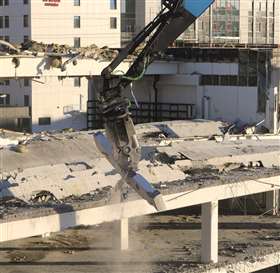
The company will be offering the range of quick couplers and attachment adaptors from the Steelwrist SQ product line. The Steelwrist SQ system is suitable for all types of excavators working across demolition and construction sites.
“After a very careful evaluation of the market we visited the Steelwrist factory in the summer and have seen in their product many new innovations, features and benefits which we look forward to offering to our existing customer base of fully automatic quick coupler users,” said Richard Yarwood, director of ECY Haulmark.
Steelwrist quick couplers are known for safety features such as Front Pin Lock and their steel casted design. SQ systems have the ability to change a hydraulic powered work tool in seconds without the operator needing to leave the cab of the machine.
